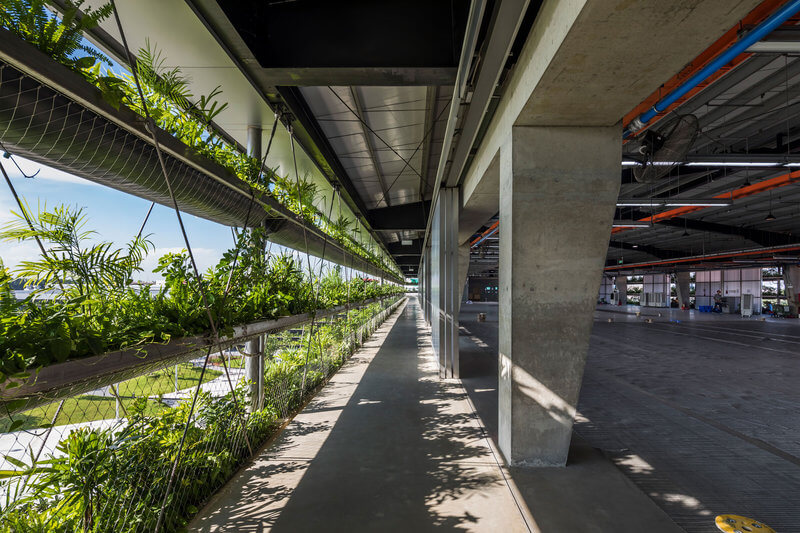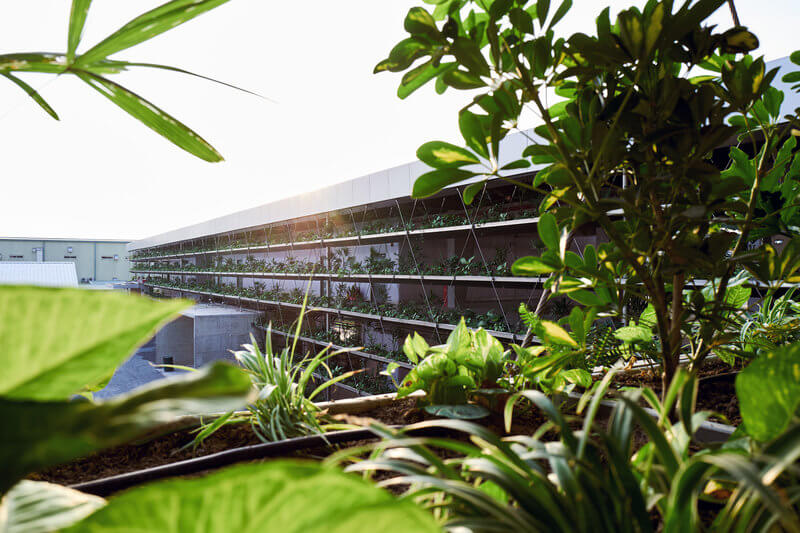Sustainable tensile architecture can be achieved through energy-efficient design, and the use of durable, recycled and low-maintenance materials.
At Tensile, we are committed to sustainability in tensile architecture by using Jakob stainless steel products in our projects. These contain up to 70% recycled content, and are manufactured in Jakob’s factory in Vietnam, which runs on 90-100% solar energy. The materials can also be recycled after use, such as when dismantling an art or lighting installation.
How this contributes to sustainability in tensile architecture
Products manufactured using renewable energy and recycled and recyclable materials help reduce waste, carbon emissions and environmental impact – in turn improving sustainability.
Jakob stainless steel rope systems also contribute to sustainability when installed. These materials have low ongoing maintenance requirements in a variety of building applications, and are resistant to fire and corrosion. This improves longevity, and reduces costs and wastage.
In green tensile architecture, such as green walls or facades, they help reduce building cooling costs and emissions. This is due to the insulating effect and cooling breezes created by the gap between the plants and the wall surface. Evaporation from the watering system provides additional cooling.
The materials also offer increased sustainability in safety barriers on bridges and elevated platforms through improved durability and natural disaster resistance, and by reducing material and labour needs.

A sustainable building producing sustainable products
Jakob believes in sustainability and efficiency, values that have been demonstrated in the innovative design of its Saigon factory, where the products we use are manufactured.
When Jakob Rope Systems rebuilt the factory following a period of growth, it sought to develop a design that would suit the climate and reduce energy use and impact on the environment.
To help achieve this, the company used stainless steel ropes and nets from its own production line, containing an average of 70% recycled content. The stainless steel materials were used to support green wall facades installed across all storeys. The facades help to shade the interior, improve natural ventilation, lower building temperatures and filter air pollutants.
316-grade stainless steel Webnet mesh holds the nine levels of planters in place across the building walls. The green facades reduce the use of mechanical cooling, which in turn lowers carbon emissions. Natural light – also important for reducing energy use – is brought into the building through its translucent polycarbonate sliding walls.
Jakob used a multi-pronged approach to sustainability – the use of Webnet and greening is combined with solar panels and energy efficient appliances and technology.
Jakob Saigon achieved environmental management certification and has won numerous well-deserved architectural awards for the building. This includes the Ashui Awards 2020 Green Build of the Year.
For us, it’s important that the products we use are both recycled and recyclable, and are produced in a more sustainable way than many other materials.
Please get in touch if you are interested in achieving sustainability in your next tensile architecture project.

All Image Sources: Jakob Saigon





































